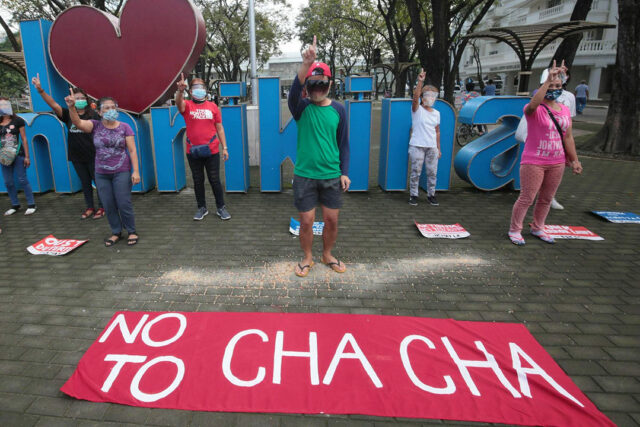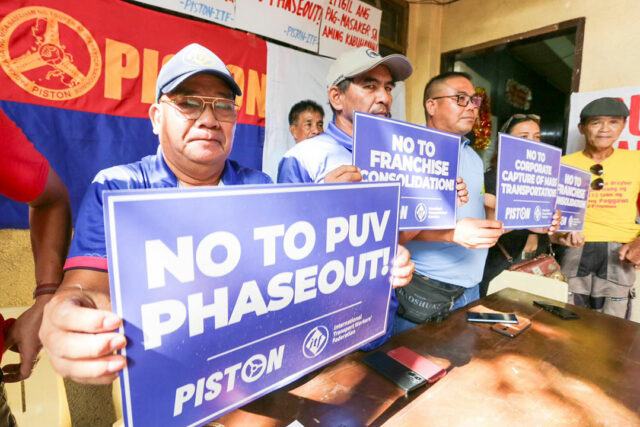Philippines accuses China of ‘serious escalation’
THE PHILIPPINES on Monday accused China of “serious escalation” after firing water cannons on Manila’s vessels on a resupply mission at Second Thomas Shoal in the South China Sea at the weekend.
Manila accused the Chinese coast guard and maritime militia of repeatedly firing water cannons at its resupply boats, causing serious engine damage to one and deliberately ramming another.
Philippine Chief of Staff of the Armed Forces Romeo Brawner, Jr. said he was aboard a vessel that was both sprayed with a water cannon and rammed.
“This is a serious escalation on the part of the agents of the People’s Republic of China,” National Security Council Assistant Director General Jonathan E. Malaya told a news briefing, where officials showed images and videos of the incident.
Mr. Brawner told DZBB radio he was unhurt and that he does not think China knew he was on board the boat.
The Philippines has filed diplomatic protests and has summoned China’s ambassador over its “aggressive” actions in the South China Sea, which a Foreign Ministry official said were a “threat to peace, good order and security.”
China’s Foreign Ministry said it had lodged solemn representations and a strong protest with the Philippine side over what it said was a collision on Sunday.
The Philippine vessels “ignored Chinese coast guard’s warnings and insisted on rushing into” waters near the Second Thomas Shoal, ministry spokesperson Mao Ning told a news briefing, adding that China’s operation was “professional, reasonable and legal.”
The Philippine ships were trying to deliver supplies to soldiers stationed on a warship that Manila deliberately grounded in 1999 to assert its sovereignty claim.
Ms. Mao said the responsibility for the “current repeated emergencies” at the disputed shoal lies with the Philippine side, which “refused to tow away the illegally beached warships and attempted to reinforce them to achieve permanent occupation.”
China urges the Philippines to stop its “maritime violations and provocations” and stop its “groundless attacks and smears” against China, she said.
Jay Batongbacal, a Manila-based expert on maritime law, said the latest incidents are “clearly another incremental escalation.”
“The use of water cannon this time is not mere dousing but had forceful impact, deliberately causing damage to vessels. And harassment of the civilian convoy is another step up in their threats,” he said.
‘DISSONANCE’
It was not the first time China used water cannons against Philippine vessels undertaking resupply missions for troops on features Manila occupies in the South China Sea. In August, the Philippines delayed a resupply mission by two weeks after its boats were sprayed.
The maritime confrontation between the Philippines and China at the weekend comes less than a month after leaders of both nations met on the sidelines of an economic summit in San Francisco to formulate ways forward in the South China Sea.
“There is a dissonance between what is being said and promised with what’s happening in the waters,” Philippine Foreign Affairs spokesperson Teresita Daza told the briefing.
Philippine President Ferdinand R. Marcos, Jr. has increasingly complained about China’s “aggressive” behavior, and he has sought closer ties with its treaty ally the United States.
China claims sovereignty over nearly the entire South China Sea, pointing to a line on its maps that cuts into the exclusive economic zones of Vietnam, the Philippines, Malaysia, Brunei and Indonesia. Taiwan, which China also claims as part of its territory, has said it does not accept Beijing’s maps.
The Permanent Court of Arbitration based in the Hague in 2016 said the line on China’s maps has no legal basis, a ruling the United States supports, but Beijing rejects.
The United States has called out China for interfering in the Philippines’ maritime operations and undermining regional stability and urged Beijing to stop “its dangerous and destabilizing conduct” in the strategic waters.
It reaffirmed its commitment to the Mutual Defense Treaty between the two countries, State Department spokesman Matthew Miller said in a statement on Dec. 10.
Asked about Washington’s comments, Ms. Mao said the maritime disputes between China and the Philippines was an issue between the two countries and that “no third party has the right to intervene.”
Mr. Malaya said China’s claims that the United States is fueling the Philippines’ audacity for provocation have no basis and reiterated that the US was not involved in resupply missions.
He said the Philippines is eyeing a new strategy in the South China Sea.
“We have to make some adjustments given the recent developments and we hope to be able to present this to the President very soon,” he said, adding that “there will be adjustments in our movements” especially since the President himself has expressed deep concern over the latest incidents.
Mr. Marcos on Sunday night said the actions of Chinese Coast Guard and maritime militia ships, which he described as aggressive and provocative, have only “further steeled” the government’s determination to defend the country’s sovereignty.
In a statement, the President reiterated that any foreign claim of sovereignty over Second Thomas Shoal, which falls within Manila’s exclusive economic zone (EEZ), is “baseless and absolutely contrary to international law.”
Scarborough Shoal is “sovereign Philippine territory and an integral part of our archipelago,” Mr. Marcos added. “No one but the Philippines has a legitimate right or legal basis to operate anywhere in the West Philippine Sea,” he added, referring to areas of the South China Sea with the country’s EEZ.
Ms. Daza said 14 countries have expressed support for the position, including the US, which on Monday accused China of using acoustic devices that incapacitated Filipino crew members.
“Obstructing supply lines to this longstanding outpost and interfering with lawful Philippine maritime operations undermines regional stability,” the US State Department said in a statement.
Australia, Canada, Denmark, the European Union, Finland, France, Germany, Ireland, Japan, South Korea, the Netherlands, New Zealand and the United Kingdom have also joined the chorus of concern over China’s actions, Ms. Daza added.
The water cannon incidents on Sunday prompted a civilian convoy that was set to pass near Second Thomas Shoal to change course.
The coalition said the wooden boat MV Chowee, one of the Christmas convoy boats, had managed to reach Lawak Island at 5 a.m. to deliver supplies after taking a different route from the MV Kapitan Felix, which was carrying more than 50 volunteers and dozens of journalists.
The coalition announced on Sunday night that it had agreed to return to El Nido, Palawan after the constant shadowing of four Chinese vessels, two of which were Chinese Navy ships. — Kyle Aristophere T. Atienza with Reuters












